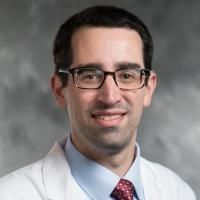Cortical stimulation mapping for localization of visual and auditory language in pediatric epilepsy patients.
Date
2019-11-08
Journal Title
Journal ISSN
Volume Title
Repository Usage Stats
views
downloads
Citation Stats
Attention Stats
Abstract
OBJECTIVE:To determine resection margins near eloquent tissue, electrical cortical stimulation (ECS) mapping is often used with visual naming tasks. In recent years, auditory naming tasks have been found to provide a more comprehensive map. Differences in modality-specific language sites have been found in adult patients, but there is a paucity of research on ECS language studies in pediatric patients. The goals of this study were to evaluate word-finding distinctions between visual and auditory modalities and identify which cortical subregions most often contain critical language function in a pediatric population. METHODS:Twenty-one pediatric patients with epilepsy or temporal lobe pathology underwent ECS mapping using visual (n = 21) and auditory (n = 14) tasks. Fisher's exact test was used to determine whether the frequency of errors in the stimulated trials was greater than the patient's baseline error rate for each tested modality and subregion. RESULTS:While the medial superior temporal gyrus was a common language site for both visual and auditory language (43.8% and 46.2% of patients, respectively), other subregions showed significant differences between modalities, and there was significant variability between patients. Visual language was more likely to be located in the anterior temporal lobe than was auditory language. The pediatric patients exhibited fewer parietal language sites and a larger range of sites overall than did adult patients in previously published studies. CONCLUSIONS:There was no single area critical for language in more than 50% of patients tested in either modality for which more than 1 patient was tested (n > 1), affirming that language function is plastic in the setting of dominant-hemisphere pathology. The high rates of language function throughout the left frontal, temporal, and anterior parietal regions with few areas of overlap between modalities suggest that ECS mapping with both visual and auditory testing is necessary to obtain a comprehensive language map prior to epileptic focus or tumor resection.
Type
Department
Description
Provenance
Subjects
Citation
Permalink
Published Version (Please cite this version)
Publication Info
Muh, Carrie R, Naomi D Chou, Shervin Rahimpour, Jordan M Komisarow, Tracy G Spears, Herbert E Fuchs, Sandra Serafini, Gerald A Grant, et al. (2019). Cortical stimulation mapping for localization of visual and auditory language in pediatric epilepsy patients. Journal of neurosurgery. Pediatrics, 25(2). pp. 1–10. 10.3171/2019.8.peds1922 Retrieved from https://hdl.handle.net/10161/25391.
This is constructed from limited available data and may be imprecise. To cite this article, please review & use the official citation provided by the journal.
Collections
Scholars@Duke

Carrie Rebecca Muh
Carrie R. Muh is a Pediatric Neurosurgeon specializing in the surgical treatment of epilepsy. She worked full time at Duke University from 2011 to 2019 and became Adjunct faculty when she moved to New York Medical College in 2019.
Dr. Muh grew up in California and began scientific research in high school as part of the NASA Student Space Biology initiative. She went on to study at the Massachusetts Institute of Technology (MIT) where she earned two Bachelor's degrees, in Biology and Political Science. During her undergraduate studies, she worked in the laboratory of DNA-repair scientist Dr. Graham Walker. Dr. Muh also earned a Master's degree in Political Science with a concentration in health policy. After graduation, she spent 8 months working on liver cancer research at the Shanghai Cancer Institute in Shanghai, China, returning to attend medical school at Columbia University's College of Physicians and Surgeons. While at Columbia, Dr. Muh spent a year working in the Gabriel Bartoli Brain Tumor laboratory run by Dr. Jeffrey Bruce, and she taught the medical student neuroanatomy review course to the more junior medical students.
Dr. Muh did her neurosurgery residency at Emory University Hospital and her fellowship in Pediatric neurosurgery at Emory/Children's Healthcare of Atlanta (CHOA). During her residency, she spent time in the pediatric brain tumor laboratory of Dr. Donald Durden. She started at Duke as an Assistant Professor in Neurosurgery and Pediatrics in the summer of 2011 after finishing her fellowship. While at Duke full time, she was the director of education for the medical students within the Department of Neurosurgery, directing the medical student sub-internships. She also earned a Master of Health Sciences in Clinical Research degree from Duke University, and graduated from the esteemed Pediatrics Leadership Program at Harvard Medical School.
Dr. Muh treats all types of pediatric neurological disorders, including brain and spinal cord tumors, moya moya, craniosynostosis, Chiari malformation, spina bifida and hydrocephalus, though she specializes in and is most well-known for pediatric epilepsy surgery. She has done research and published widely on cortical mapping of the brain in patients with epilepsy and on the use of neurostimulators in pediatric patients with epilepsy.
Dr. Muh also studies new techniques for the treatment of hydrocephalus and noninvasive measurement of intracranial pressure (ICP). She won a Coulter Grant to work with collaborators in the Department of Biomedical Engineering to create a SmartShunt, a CSF-shunt which permits noninvasive measurement of intracranial pressure; a device for which they have been awarded a patent. Dr. Muh was also a team leader on Bass Connections grants to investigate the use of oculomotor assessments to noninvasively diagnose sports-related traumatic brain injury (TBI). She has more than 75 published papers, reviews, commentaries and chapters.
Since moving to NY in 2019, Dr. Muh has maintained an Adjunct status at Duke to facilitate continued research projects with colleagues here.
She is now the Chief of Pediatric Neurosurgery and the Surgical Director of the Epilepsy Program at Westchester Medical Center and Maria Fareri Children's Hospital in New York, as well as an Associate Professor of Neurosurgery and Pediatrics at New York Medical College. She is internationally recognized for her work in pediatric epilepsy surgery. She has been invited to speak internationally multiple times and serves on numerous boards including the Executive Committee of the American Association of Neurological Surgeons/Congress of Neurological Surgeons (AANS/CNS) Pediatrics Section. She is on the Board of Directors for the New York Society of Neurosurgery, she serves on the International League Against Epilepsy (ILAE) Epilepsy Surgery Education Taskforce, and she is a member of the International Epilepsy Surgery Society.

Jordan Komisarow

Herbert Edgar Fuchs
Clinical neuro-oncology research including collaborations studying molecular genetics of childhood brain tumors.
Potential role of the free electron laser in surgery of pediatric brain tumors. Current work includes animal models with human brain tumor xenografts in preclinical studies.
Collaboration with the neurooncology laboratory of Dr. Darell Bigner in preclinical studies of new therapeutic agents.

Gerald Arthur Grant
Unless otherwise indicated, scholarly articles published by Duke faculty members are made available here with a CC-BY-NC (Creative Commons Attribution Non-Commercial) license, as enabled by the Duke Open Access Policy. If you wish to use the materials in ways not already permitted under CC-BY-NC, please consult the copyright owner. Other materials are made available here through the author’s grant of a non-exclusive license to make their work openly accessible.
